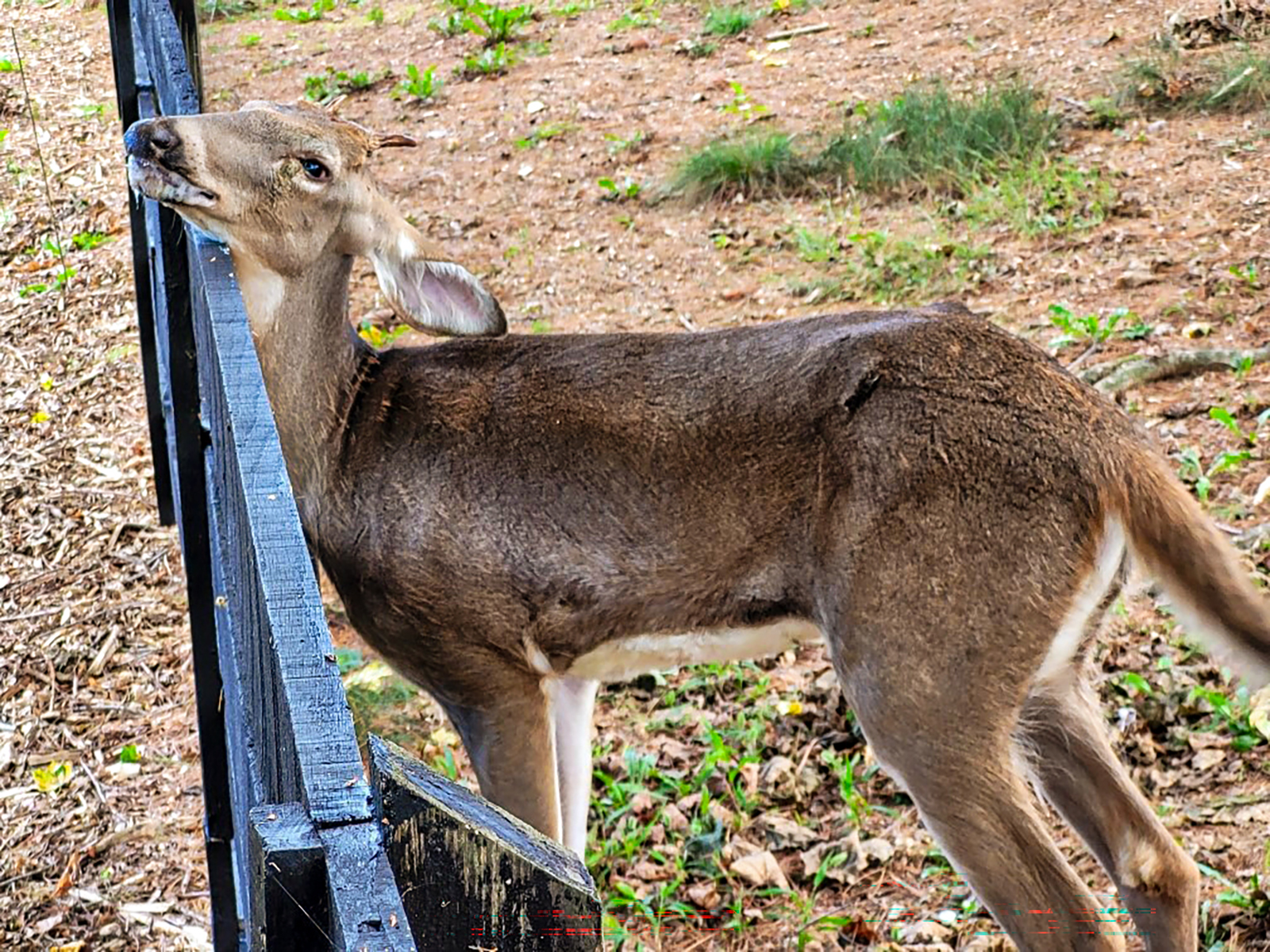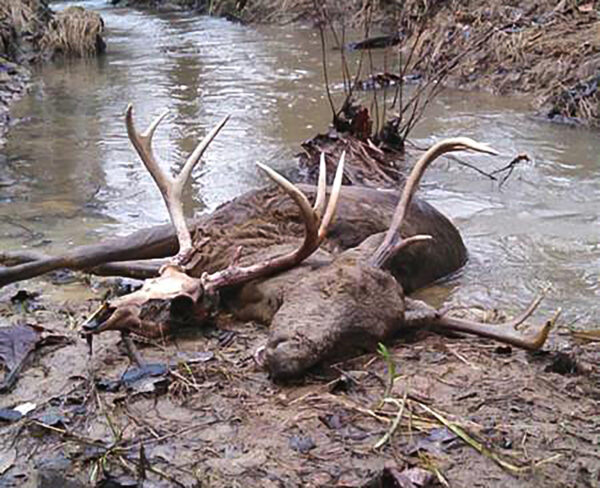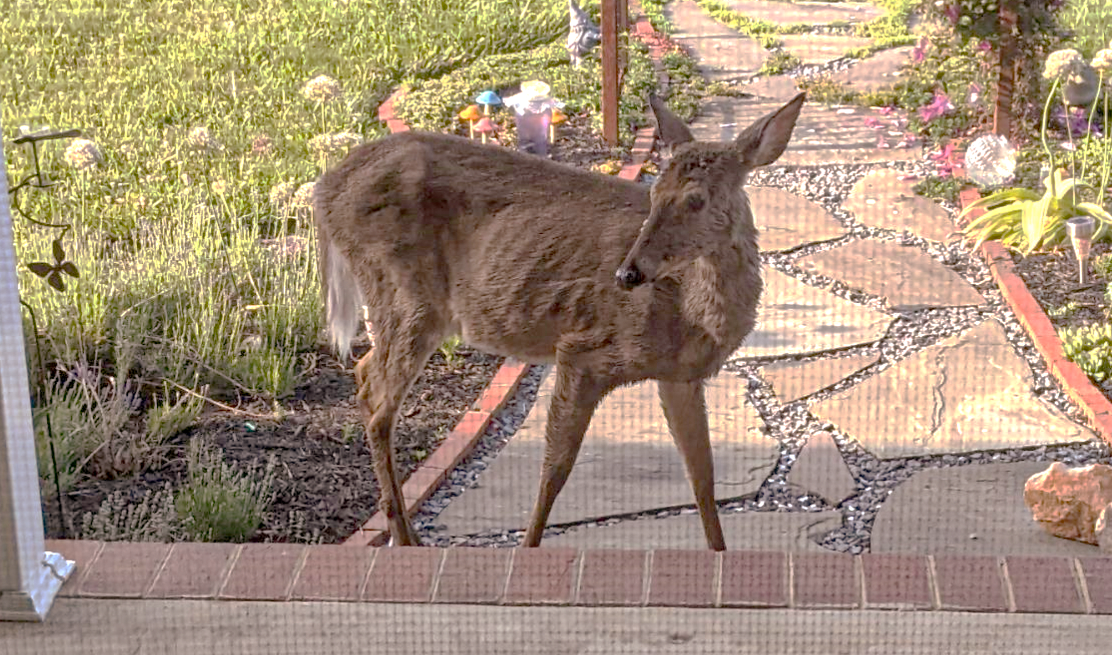CWD and HD: What’s the Difference?
By Justin Folks/DWR for Whitetail Times
Hemorrhagic disease (HD) and chronic wasting disease (CWD) are the two most significant diseases affecting whitetailed deer in the United States, yet there is still a lot of confusion and misconception about them among deer enthusiasts. This article’s goal is to explain how these diseases differ, how they impact deer, and our experiences with them in Virginia.
Hemorrhagic Disease Overview
HD can be caused by epizootic hemorrhagic disease (EHD) viruses or bluetongue (BT) viruses. Both belong to the same genus, Orbivirus, but are genetically distinct. These viruses operate and affect deer similarly and many people will use the terms EHD and bluetongue interchangeably. However, they technically are different. Because they are so similar, they are often grouped together simply as HD.
HD viruses are transmitted by a biting midge (sometimes called “no-see-ums”) in the genus Culicoides. While several species of wild and domestic ruminants (goats, sheep, cattle) can host the virus, whitetailed deer are the most susceptible to infection and subsequent clinical symptoms.

DWR staff responded to a call about this yearling buck acting abnormally in the area of the HD outbreak in Augusta County in October 2023. Delirious with fever, the buck used this fence to help hold itself up. After humane dispatch, a spleen sample was sent to a lab which confirmed this deer had EHD. Note the good body condition of this deer, showing how quickly deer may succumb to the EHD virus.
HD Transmission and Disease Progression
HD is transmitted when a midge (the vector) bites an infected critter (the host) and then bites a deer, transmitting the virus to the deer.
Midges prefer to breed in mud flats like those that are created when water recedes in ponds or rivers, which is why large outbreaks of HD typically occur during droughts. An analysis of HD data in Virginia from 1993 through 2006 showed that HD activity was strongly correlated to years that had a wet spring followed by a hot, dry summer—ideal conditions for prime midge breeding. With more midges, the greater the chance of virus transmission. It’s still unclear how the virus persists in various hosts or if some midges somehow retain the virus over winter.
The effects of HD on deer are highly variable. In many southeastern regions where HD is fairly common, some deer herds have developed varying levels of immunity to the virus and may survive despite experiencing some clinical symptoms. Symptoms can include a high fever, which can cause interruptions in hoof growth, leading to cracking or sloughing hooves (that we monitor with DMAP data as an indicator of HD activity). In some deer, the virus can cause an incredibly high fever, lethargy, internal bleeding (or hemorrhaging, hence the name “hemorrhagic disease”), and rapid death. Because these deer are impacted so quickly by the virus, they succumb to the disease while still in good body condition. The high fever causes the deer to seek water to cool themselves down. During an outbreak of HD, it is common to find numerous, seemingly healthy deer dead near water sources.

EHD is spread by a tiny, flying, blood-feeding insect called a midge. When the landscape is experiencing drought conditions, and deer are often visiting their water source, they may encounter thousands of midges. Photo courtesy of Amelia Springs Hunt Club
When an HD outbreak occurs, many farmers worry about the potential impacts on livestock. While cattle can carry the virus, most healthy cattle experience a subclinical infection (they carry the virus but won’t experience noticeable symptoms). However, the bluetongue viruses can be devastating on sheep and goats. Concerned livestock farmers may think that eradicating deer will reduce the risks of HD, but deer are not the only carriers of the virus. The only way to truly reduce HD would be to eradicate midges, which is impossible to do. HD outbreaks are a naturally occurring phenomenon that we just have to live with.
Population Impacts
HD activity is more closely related to midge abundance than deer abundance. However, in areas with more deer, there are more potential victims that could die during an outbreak. The severity of an outbreak can depend on the historical prevalence of HD in an area. In Virginia’s Tidewater region, where HD is more common, deer can develop immunity to the virus, making outbreaks less severe. Conversely, in regions such as west of the Blue Ridge (WBR), where HD outbreaks have been rare, die-offs can be more significant because animals have little to no immunity to the virus.
What we’re noticing is that HD activity seems to be increasing near WBR and northward in the United States, likely a result of changing climate patterns—hotter, drier summers create ideal breeding habitats for midges. Thus far, even after the most severe outbreaks, local deer populations have rebounded within a couple of years. If our climate continues to demonstrate a pattern of wet springs followed by hot, dry summers, HD activity may continue to increase in areas where it was once rare or nonexistent. While we don’t envision HD wiping out any deer herds entirely, local impacts could be prolonged in less productive habitats like Virginia’s western mountains.

Chronic Wasting Disease Overview
CWD is unlike any other deer disease. CWD is not caused by a virus or bacteria, but by a misfolded protein called a prion. CWD belongs to a group of diseases known as Transmissible Spongiform Encephalopathies (TSEs), which literally translates to a disease that eats holes in brain tissue and can be passed from one individual to another. Other TSEs include Bovine Spongiform Encephalopathy (BSE or “Mad Cow Disease”), Scrapie (occurs in sheep and goats), and Creutzfeldt-Jakob Disease (CJD, occurs in humans). CWD is known only to infect members of the deer family (cervids), including whitetailed deer, mule deer, elk, moose, and reindeer.
The prions create holes in the tissues of the central nervous system that ultimately affect the animal’s ability to function, causing it to starve or “waste away” (hence the name “wasting” disease). CWD was first observed as a clinical syndrome of mule deer in research facilities more than 50 years ago, but the origin of CWD remains unknown. It is always fatal to deer, with no known cure or vaccine.
CWD Transmission and Disease Progression
Evidence suggests that CWD transmission primarily occurs through the ingestion of prions. An infected deer will at some point begin shedding prions in saliva, urine, and feces. It is unknown at what stage of infection that deer begin shedding the infectious prions, but the incubation period for CWD (time from exposure to onset of clinical symptoms) is quite long. In experimental settings, the minimum incubation was about 15 months, with an average time from infection to death about 23 months in mule deer. The maximum course of disease is unknown but can exceed 25 months in experimentally infected deer. Prions have no genetic material, are highly resistant to heat and disinfectants, and remain infectious in the environment for prolonged periods.
Once a deer develops neurological symptoms, it can still take a while for the animal to die. In the very late stages of the disease, deer may exhibit the so-called “zombie deer” behavior that is often portrayed by the media. Because of the long incubation period and the time to visible symptoms, infected deer can shed prions and potentially spread the disease for over a year while appearing perfectly healthy. In fact, hunters are often surprised when they receive a call from us notifying them their deer tested positive because the deer showed no signs of disease. Many of our positives come from bucks brought to a cooperating taxidermist—deer typically considered trophy-worthy, not a “zombie.” Many times, infected deer die of other causes before they succumb to the disease itself, such as predation or vehicle collisions due to their neurological deficits.
Since most CWD-positive deer look healthy and people seldom see the “zombies,” it can perpetuate the myth that CWD is not a real disease. When CWD prevalence (ratio of infected deer vs healthy deer in a population) is low, very few “zombies” are seen. However, when prevalence reaches around 40 percent, that changes. For example, ongoing research in Hampshire County, West Virginia—the “ground zero” for CWD in WV—shows CWD has become the main source of mortality among GPS-collared deer in the core disease area, suggesting more deer are now dying of CWD than by any other cause. In this study, researchers conducted a field necropsy of each study animal that dies. When they skinned back the hide on one deer, they noticed the spine had worn holes in its hide. This disease is very real.

This deer in Shenandoah County tested positive for CWD and was in the latter stages of infection. The emaciated deer was experiencing neurological symptoms such as approaching this house, staggered stance, and difficulty walking. After becoming infected, it can take well over a year for a deer to start showing the signs of what we consider a clinical suspect of CWD. Photo taken by homeowner.
CWD spreads more rapidly when deer congregate around a feed, bait, or mineral site, where prion deposition is concentrated. Recent studies by Michigan State University and Mississippi State University have shown increased direct contact among deer at feed/bait sites compared to food plots, around mast trees, and within other natural forage. The higher the deer density, the greater the risk of disease, and the faster CWD can spread.

Among all sexes and age classes, CWD prevalence tends to be higher in older males for a variety of reasons: males have larger home ranges, which increases contact with other deer; their breeding behavior (the act of breeding itself but also creating/visiting scrapes and licking branches); and the significant amount of time spent in bachelor groups with other bucks, who also have a greater chance of infection. The age part is simply a numbers game—the longer a deer remains on the landscape, the greater the odds are that they might come in contact with prions.
Researchers have developed new testing techniques that allow biologists to detect CWD prions on licking branches and in soil samples at scrapes. Some states are beginning to use these methods as an early disease surveillance strategy—if prions are detected at these sites, agencies can then focus their testing efforts on deer in those areas. CWD presence can only be confirmed using validated tests that require a tissue sample from a dead deer.
CWD Management
DWR cannot manage this disease alone. We need your help. Here’s what you can do:
- Keep hunting: Keeping deer densities relatively low helps reduce the chances of infected deer encountering healthy deer. Increased hunting pressure also boosts the chances of hunters removing infected deer, thereby reducing the sources of prions on the landscape.
- Don’t feed deer: No-brainer. Feeding deer concentrates them in one area, which increases disease spread. Deer don’t need to be fed. In Virginia, it is illegal to feed deer statewide from September 1 through the first Saturday in January, year-round in CWD Disease Management Areas, within counties 25 miles of a known positive, and in the Elk Management Zone in southwestern Virginia.
- Dispose of carcasses properly: In an ideal world, all deer carcasses would be incinerated after butchering, but that’s not always feasible. Prions remain infectious in the environment for long periods, so if incineration is not possible, reduce the risk of spreading prions across the landscape by double-bagging leftover parts and disposing of them in household trash or at a landfill, especially the head and spinal column, where prions concentrate in nervous tissue.
- 4. Don’t move high-risk parts: High-risk parts include the head and spine, though other parts of a carcass may contain prions as well. Moving whole or field-dressed carcasses out of a Disease Management Area (DMA) is restricted to help limit the spread of prions. If you kill a deer in a DMA, the carcass must stay in the DMA. You can leave a DMA with boned-out or quartered meat, antlers, cleaned skulls or skull plates, capes (without the head attached), and finished taxidermy. Properly dispose of carcasses within the DMA.
- Don’t use lures that contain natural deer secretions: Prions are shed in urine, and bottled natural deer urine often comes from deer farms where CWD is more prevalent. Do the math. It’s also not a good idea to use the tarsal gland from another deer as a lure. It’s not worth the risk and it’s against the law!
- Get your deer tested: Early detection is key to slowing the spread of CWD. If your county has a mandatory CWD sampling day, there’s a darn good reason for it—it doesn’t take long to get a sample, and it has the vibe of the check stations from days gone by. If your county does not have a mandatory day but has drop-off stations nearby, consider dropping off a head for testing. It’s simple to do, and it helps us monitor the disease statewide. Keep in mind that a CWD test is not a food safety test; we can’t determine whether the meat is safe to eat or not, but the Center for Disease Control (CDC) recommends against consuming meat from a CWD-positive deer. We do offer replacement tags for CWD-positive deer for free.
Population Impacts
The long-term impacts of CWD on whitetailed deer populations are still uncertain. Given the long incubation period, infected deer could still reproduce before succumbing to the disease, so deer are unlikely to disappear anytime soon. However, if left unchecked, CWD prevalence could increase to a point where it becomes the main source of deer mortality, as seen in the “core area” of Hampshire County, WV.
We don’t want to get to that point, though areas like Frederick County are approaching it. CWD has the potential to cause declines in deer populations, as evidenced by declining mule deer populations in the CWD-endemic regions of Colorado and Wyoming.
CWD has certainly changed the game when it comes to deer hunting and deer management, and it doesn’t appear to be going anywhere anytime soon. We can only hope to “hold the line” while science produces new and effective tools in the fight. We need your help in this battle!
For more information on CWD and what we’re doing about it in Virginia, visit DWR’s website.
Justin Folks is the Deer Project Coordinator for the Virginia Department of Wildlife Resources. Justin works with the district wildlife biologist to oversee the statewide deer management program. Readers can ask Justin deer-related questions at: editor@dwr.virginia.gov.
Legal Disclaimer:
EIN Presswire provides this news content "as is" without warranty of any kind. We do not accept any responsibility or liability for the accuracy, content, images, videos, licenses, completeness, legality, or reliability of the information contained in this article. If you have any complaints or copyright issues related to this article, kindly contact the author above.
